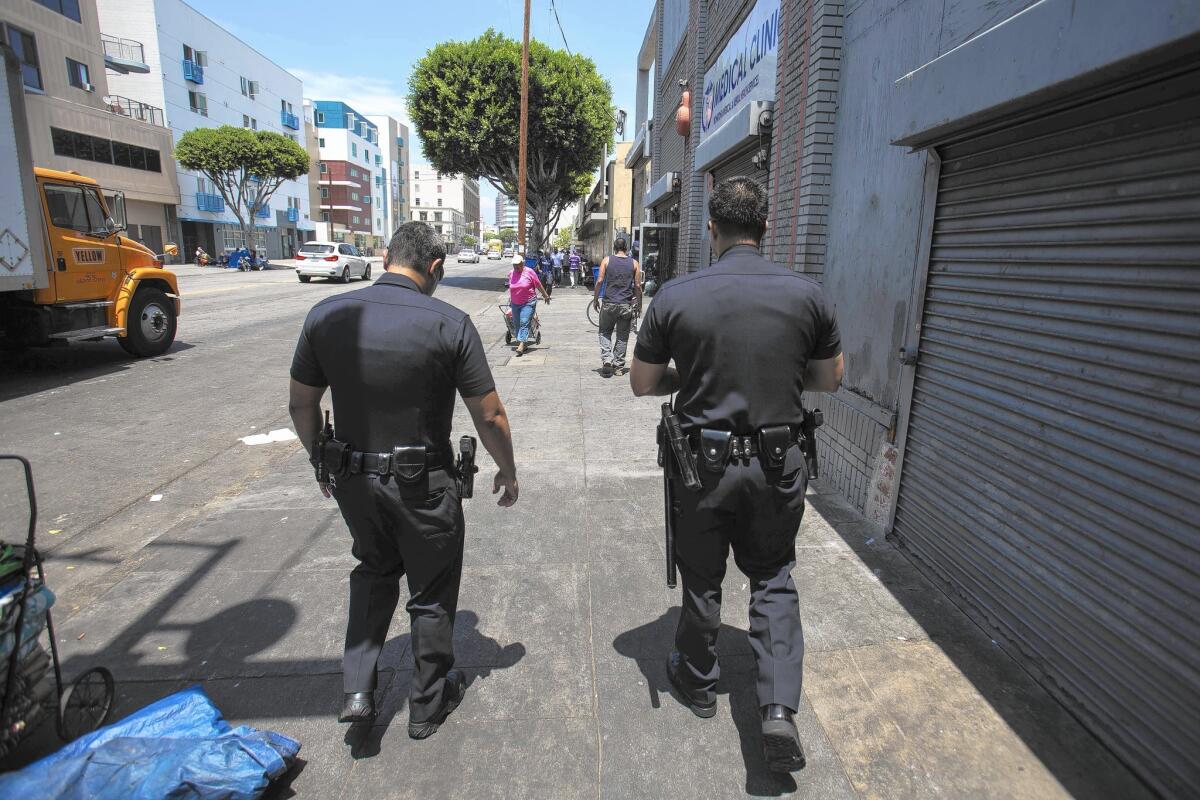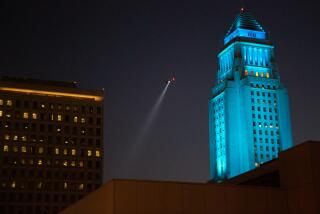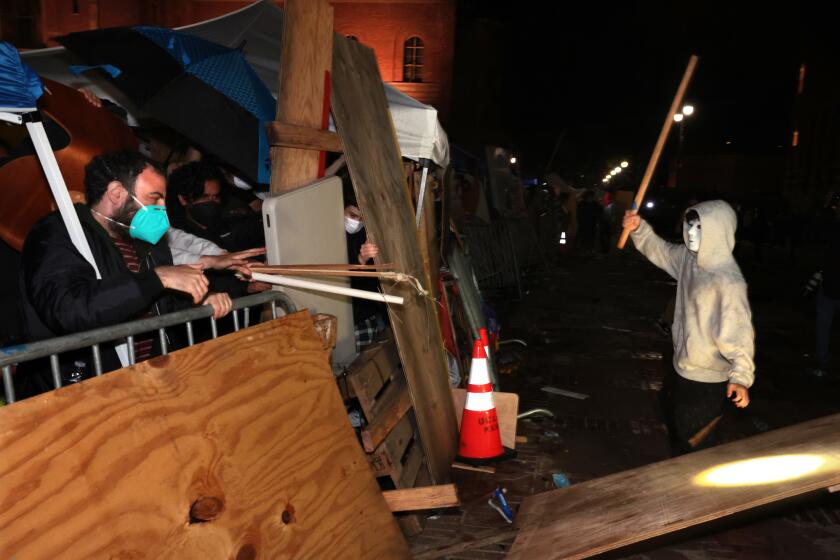LAPD deployed ‘ghost cars’ to meet staffing standards, report finds

Los Angeles police deliberately falsified records to make it appear that officers were patrolling city streets when they were not, an investigation by the LAPD’s independent watchdog has found.
The deception occurred in at least five of the department’s 21 patrol divisions, according to the Police Commission’s inspector general, who released a report Friday on the “ghost car” phenomenon. Officers working desk jobs, handing out equipment in stations or performing other duties were logged into squad car computers to make it appear they were on patrol.
The findings bolstered allegations union officials have made in recent months that patrol commanders around the city were using the scheme to mask the fact that they did not have enough officers on patrol to meet staffing levels set by department brass.
“This has been going on for years,” said veteran Officer Mark Cronin, a director in the Police Protective League, which represents rank-and-file cops. “It is more prevalent in some areas, but it’s happening throughout the city… There is this intentional misperception being put out there that there are more officers on the street than are actually there.”
LAPD Cmdr. Andrew Smith declined to comment on the findings, citing a meeting Tuesday during which the commission will review the report.
The findings underscore long-running struggles within the department to keep a sufficient portion of the roughly 9,900 officers assigned to traditional patrol duties, while also filling the many specialty units and administrative jobs at the department. With nearly 4 million people in a city that sprawls over more than 500 square miles, the LAPD is widely viewed as significantly undersized.
Alex Bustamante, the inspector general, wrote in his report that the practice of manipulating patrol statistics “occurred during multiple shifts at different times of day, involved officers of differing ranks, and was carried out differently depending on who was involved and where they were assigned.”
The department’s Office of Operations, which oversees patrol deployments, relies on a computer program to analyze various factors and to determine the workload in each division at various times during the day. The program calculates how many patrol cars are needed to allow officers to respond to emergency calls within seven minutes — the department’s long-established standard, Bustamante wrote.
To keep tabs on the deployment levels, department officials require station supervisors to document in a computer database what assignment each officer was given on every shift. And twice every day — at noon and 10 p.m. — a snapshot of deployment statistics for each division and the department’s four bureaus is sent by email to senior officials.
The patrol staffing levels are closely monitored and captains who run each division are held accountable if they fall short, Bustamante wrote.
Department officials have always tried to keep secret the number of officers on duty in the city at any given moment and how many of them are assigned to regular patrol work. The Times reviewed one of the department’s daily deployment snapshots from October last year that showed that 190 patrol cars, each with two officers, were in use throughout the entire city at the time. In addition, 43 single-officer cars were on the streets, according to the record — indicating that about 420 officers were assigned to patrol at the time of the snapshot. Roughly another 220 officers were working non-patrol assignments such as gang details, the record shows.
Bustamante opened his investigation after hearing reports from officers of how the ghost car scheme was used to make it appear as if divisions were meeting the deployment requirements.
Despite evidence that the problem was more widespread, Bustamante focused on deployments in two divisions, which were not named in the report, during March last year. The report did not specify how often patrol figures were inflated or by how much, but documented several examples of how ghost cars were used.
In one typical case, an officer assigned to assist detectives logged in to a patrol car’s computer but remained at the police station for the entire shift working on investigations, Bustamante found. To make sure dispatchers did not try to send the officer to a help call, the officer radioed in to the dispatch center to make it appear he or she was already on a call, according to the report.
The report did not identify who in each of the divisions’ chain of command ordered the numbers to be fabricated.
Cronin described an “intense pressure” that captains feel to meet the staffing requirements and to not run afoul of Assistant Chief Earl Paysinger, who runs the Office of Operations, and other top officials. That pressure, Cronin said, “trickles down” to the sergeants and lieutenants who handle patrol deployments.
Steve Soboroff, president of the Police Commission, acknowledged the pressure to meet the staffing levels, but said it could not excuse efforts to intentionally skew the deployment numbers.
Soboroff praised department leaders responding “strongly, without reservation” to the report’s findings. Bustamante, too, noted in his report that senior officials responded swiftly.
The report highlighted an email from Paysinger, in which he instructed his senior staff to “be very clear that employing this type of feigned deployment practice is NOT permissible. If such a strategy is currently being utilized on any watch or in a specialized unit in your bureau, you shall cause it to be terminated immediately.”
In July, when Cronin and other union officials first made public allegations about the use of ghost cars, the department opened an internal investigation in an effort to determine where in the department the practice was being used and who was responsible. Department officials also agreed to conduct unannounced audits in every division over the next two years, according to the report.
joel.rubin@latimes.com
Twitter: @joelrubin
More to Read
Start your day right
Sign up for Essential California for news, features and recommendations from the L.A. Times and beyond in your inbox six days a week.
You may occasionally receive promotional content from the Los Angeles Times.







